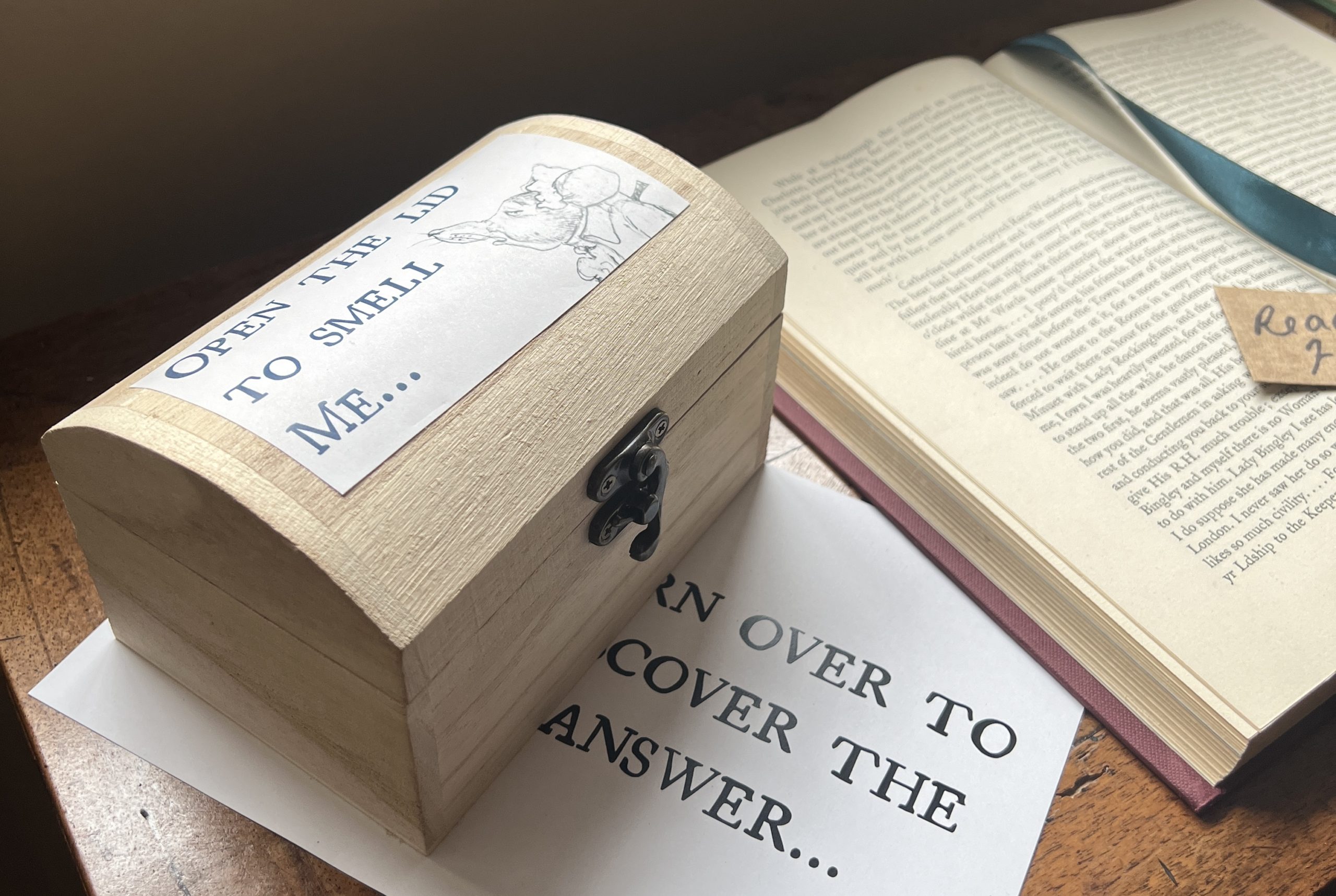Why did your organisation choose to be part of the cohort?
We wanted to learn how to develop a family offer without negatively impacting on the experience for our existing core demographic.
As a building, we are unable to provide some of the facilities families expect, including visitor toilets, lift access, buggy access or designated play spaces. We wanted to learn how to manage promoting a family friendly experience within a building that is out of step with visitor expectations.
What was your organisation’s approach to family provision before the cohort?
Our provision included a bespoke mouse trail through the house, with illustrations of mice based on Ann Fairfax, Viscount Fairfax and their staff. Our youngest visitors were encouraged to find a mouse which had been hidden in each room with the ‘Mouse Trail’. There was a more challenging ‘Mouse Quest’ for visitors of 10 years and older, which involved deciphering clues to find a code, which unlocked a safe containing the lost ‘Fairfax Jewels’.
What did you achieve as a result of the cohort?
- New interactive elements in exhibitions: for example, the ‘Reunited: Lifting Lockdown with the Georgians’ exhibition included dancing, dressing up and practicing the language of the fan.
- New scent trail: allowing fun and touch-free engagement throughout the building.
- Improved marketing to families: building family offer into longer term promotion.
- Updated website information: to improve families’ understanding of our limited facilities and avoid disappointment.
We found that some of the most helpful sessions were those where examples of good practice from other organisations were shared. These offered us fresh ways of thinking about interacting with families, which in turn helped to shape our own thinking. Feedback sessions with our mentor were also useful, helping us to refine our thinking and have the confidence to try new ideas.
In focus: Scent Trail
In response to the cohort, we developed a scent trail through Fairfax House, which we first delivered in February half term 2022. This included a scent box in each room for visitors to guess the smell and an eighteenth-century style envelope label, which contained the answer and shared a bit of historical context.
We offered a diverse range of smells for visitors to sample. This included tea, tobacco and marzipan to reflect luxurious aspects of eighteenth century urban living, as well as more distasteful smells, such as smelly feet and flatulence to reflect Georgian hygiene habits! We also included the smell of incense as a way to highlight the Fairfax family’s Catholic faith.
We aimed this activity at families visiting the house in half term with no lower or upper age limit. Access to the activity was intentionally intergenerational and designed to provoke a strong reaction to encourage curiosity and learning.
Budget
The total cost of the project was £80.
What was your organisation’s approach to families after the cohort?
The cohort has helped us to sharpen our focus in terms of promoting family friendly activities at the museum, making them a part of our forward planning and marketing, rather than as an afterthought.
It has also made us more flexible in our thinking, moving away from a permanent unchanging family offer, to smaller, cheaper and more flexible activities which better reflect and contribute towards our changing programme of exhibitions.
Following advice from the cohort, we updated our website to stress the physical limitations of our building and better manage families’ expectations.
Top tips
- Plan ahead.
- Be creative and bold.
- You don’t need to spend a fortune to be effective.
- Make it fun.
Tags: Case Study, Yorkshire
Categories: Case Studies
Audience: Family

